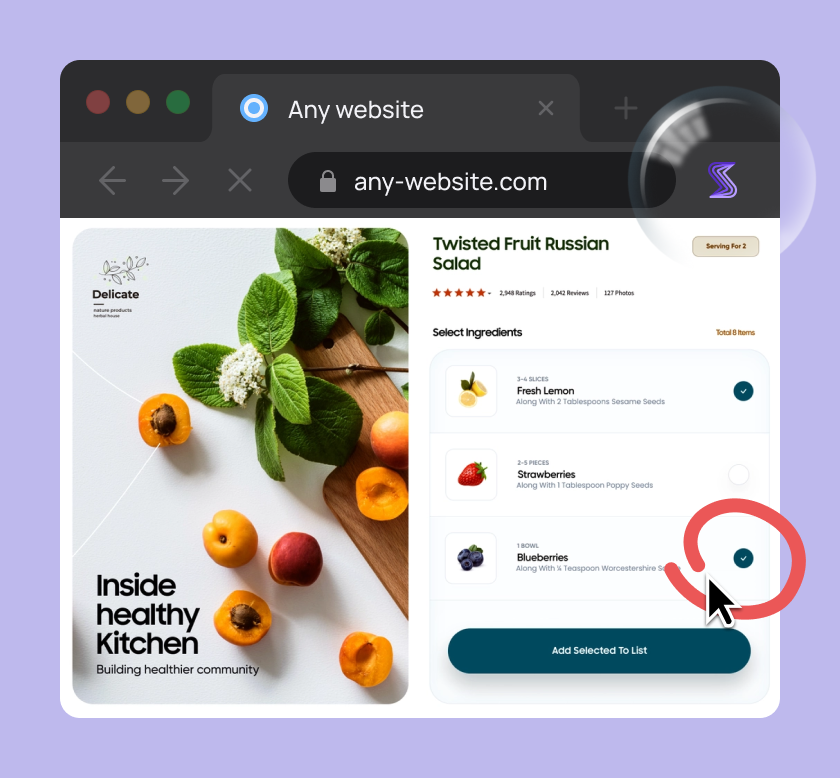
Key Takeaways:
- After introducing SDKs, one management platform’s adoption rate soared by 178% in just six months.
- SDKs reduce the time it takes to develop third-party apps by up to 50%, allowing developers to integrate APIs much faster.
- APIs now drive 71% of all web traffic, highlighting the need for secure and well-built SDKs.
Building a great app, feature, or service isn’t just about the code—it’s about how easily others can integrate with your product.
That’s where SDKs (Software Development Kits) come in.
Instead of forcing developers to write custom integrations from scratch, SDKs provide ready-made tools that simplify adoption, improve security, and speed up development.
In this article, we’ll explore five key reasons why building an SDK can boost your product’s success and make life easier for developers.
Table of Contents
1. Increase product adoption
Developers typically prefer ready-made tools over building integrations from scratch.
That’s why companies offering SDKs often see higher adoption—SDKs simplify integration, making it easier for developers to use your app, feature, or service.
This is especially important for API-first products, where SDKs have become an industry standard.
An Application Programming Interface (API) is a set of rules that allows different software applications to communicate with each other.
For API-first products, APIs are central to how the platform functions and interacts with other third-party services.
As Kristopher Sandoval, a web developer at Nordic APIs, points out:

Given this distinction, an SDK often includes an API, but an API alone doesn’t make up an SDK.
So, when developers need to integrate an API, having a well-built SDK saves them significant time and effort, making it a potentially crucial factor in their decision to adopt your platform.
Take Doppler, a secrets (passwords and authentication) management platform.
A robust API is essential to their business, but as their user base grew, it became clear that offering high-quality SDKs could increase adoption among developers.
By partnering with liblab, an SDK generation tool, Doppler created SDKs for multiple programming languages, ensuring they catered to the needs of their most frequent users.
After Doppler provided these SDKs, their adoption rate soared by 178% in just six months.
This exceptional growth highlights how SDKs remove adoption barriers, making it easier for developers to integrate and rely on a specific platform.
By providing quality SDKs, Doppler not only expanded its reach but also strengthened developer loyalty.
And that’s not all.
If your SDKs are well-designed and regularly maintained, they can become a lasting competitive moat, making your platform the default choice in your industry.
By offering developer-friendly SDKs, they’ve become the go-to solutions for payments and communications, respectively.
Of course, the primary reasons SDKs drive product adoption are improved developer experience and fast integration, which we’ll cover in the next two sections.

Get unreal data to fix real issues in your app & web.
2. Improve developer experience
SDKs improve the developer experience by removing guesswork and reducing frustration during integration.
Without an SDK, developers must write the functions for calling your API from scratch.
Most developers find this task unchallenging but time-consuming and tedious—something they’d rather avoid.
Conversely, SDKs typically include extensive documentation along with code examples demonstrating how to perform specific operations.
Such examples are invaluable as they provide developers with ready-made code snippets that accelerate API implementation and reduce the risk of errors, thereby improving their experience.
To illustrate, here’s a code example from the Amazon Web Services (AWS) SDK for .NET, an open-source app development platform.

This code allows developers to automate activity checks, eliminating the need for manual verification, which simplifies workflow management in AWS.
Additionally, SDKs help ensure that future API updates are properly versioned and seamlessly integrated, sparing developers the hassle of manually updating their integrations.
Without an SDK, developers must adapt to API changes on their own, which can lead to inconsistencies and unexpected errors.
As one Reddit user aptly puts it:

The last part of this comment is exactly why SDKs are so valuable.
They act as a buffer between API changes and developers, ensuring smooth transitions between versions and reducing compatibility headaches.
Instead of manually adjusting their code for every API update, developers can rely on SDKs to manage versioning, keeping their integrations stable.
Another advantage is that a well-built SDK includes useful debugging tools, error handling, and logging, which makes troubleshooting far easier.
These features allow developers to quickly identify and resolve issues, further improving their overall experience.
Overall, SDK documentation, code examples, streamlined updates, and built-in debugging not only improve developer efficiency but also contribute to the next benefit—faster integration.
3. Speed up integration
SDKs significantly reduce the time developers spend on integrating your API.
This enables third-party developers to leverage prebuilt functions in your SDK instead of writing custom code for API integration from scratch.
In simple terms, they can spend less time configuring the API and more time using it to build core features in the mobile or web app.
Ultimately, this reduces the time to market for the product, which can be a crucial competitive advantage.
According to liblab, SDKs can cut app development time by up to 50%.
By standardizing how your API is consumed, SDKs also prevent inconsistencies between different implementations.
Without an SDK, third-party developers might structure their API calls differently, leading to compatibility issues and unexpected behavior.
A well-designed SDK ensures that everyone follows the same best practices, resulting in a more stable and predictable integration experience.
As one Reddit user points out:
“Our first clients that were API-only wrote unoptimized code, it’s a lot better that they are using the SDK now.”
This also means that SDKs reduce the strain on your in-house engineering support team.
When developers rely on a well-documented SDK, they require less direct support, meaning fewer API-related questions and troubleshooting requests.
This allows your team to focus on product development rather than constantly assisting external API integrations.
Ultimately, SDKs streamline the integration process for third-party developers, making it faster, more consistent, and less resource-intensive.
4. Enforce security
Security is a top priority in API integrations, and SDKs play an important role in enforcing it.
An SDK designed with security in mind can help enforce best practices for authentication, encryption, and compliance, reducing the risk of breaches caused by improper implementation.
Without an SDK, developers must manually configure security protocols, increasing the likelihood of misconfigured authentication, weak encryption, or exposure of sensitive data.
This is especially concerning as APIs now drive a significant portion of all web traffic—71% according to a 2024 report.

In light of this, SDKs help ensure that API requests are properly authenticated and that data is transmitted securely, reducing common vulnerabilities.
One common security challenge is authentication token renewal.
Developers not leveraging an SDK must build a mechanism to detect expired tokens and manually request new ones before making API calls.

Capture, Annotate & Share in Seconds with our Free Chrome Extension!
This extra step increases complexity and introduces potential security gaps.
A well-designed SDK automates this process by handling token expiration and renewal seamlessly, ensuring uninterrupted access while maintaining security.
A good example is Auth0 SDKs and libraries, which support automated refresh tokens for web, single-page, and mobile applications.

This SDK-based approach streamlines security management while minimizing the risk of human error.
By enforcing best practices and automating security controls at the SDK level, you ensure that third-party developers integrate with your API securely, consistently, and with minimal effort.
5. Gain product insights
Building an SDK not only benefits external developers but also provides valuable insights into how they interact with your API.
By embedding analytics within your SDK, you can understand how third-party developers are using your platform and where they might be struggling.
For instance, a bug-reporting tool like our Shake can be—with the help of its own SDK—easily added to your app SDKs when building them.
Doing so allows you to monitor your app usage, receive detailed bug and crash reports, and gather real-time feedback from both testers and end users.
This way, you can quickly identify and resolve issues developers may encounter when using your app.

Shake is lightweight (average install size 8 MB, Android apps 2.5 MB), can be added to your app in minutes, and is compatible with all other SDKs.
The automatically generated, in-depth reports (tickets) with over 70 data points and optional user feedback (along with live chat options) are crucial for refining your API design.

By analyzing where developers encounter friction, you can refine your API to better align with their needs and expectations.
SDK usage analytics also enable you to track integration trends, offering valuable insights into how developers are incorporating the API into their apps.
With this data, you can improve your API documentation, prioritize features based on real-world needs, and streamline your user onboarding process.
Ultimately, SDK-enabled insights into app usage allow you to continuously evolve your API, creating a feedback loop that enhances both the developer and end-user experience.
Conclusion
An SDK isn’t just a tool—it’s a game-changer.
It transforms how developers interact with your product, making adoption effortless, integration seamless, and security rock-solid.
It saves time, reduces friction, and sets your platform apart from the competition.
More than just code, a well-crafted SDK becomes a competitive edge, a developer magnet, and a key to long-term success.
The question isn’t if you should build an SDK—it’s how soon you can start.
Are you ready to give developers what they need?







